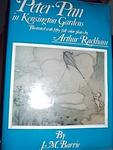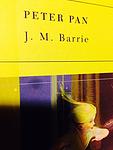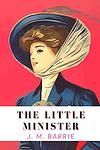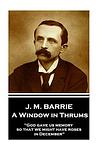J. M. Barrie
J. M. Barrie was a Scottish novelist and playwright, best known for creating the character Peter Pan. He was born on May 9, 1860, in Kirriemuir, Angus, Scotland, and died on June 19, 1937. Barrie's most famous work, 'Peter Pan; or, the Boy Who Wouldn't Grow Up,' was first performed as a play in 1904 and later adapted into a novel. His works are celebrated for their whimsical imagination, adventure, and underlying themes of innocence and escapism.
Books
This list of books are ONLY the books that have been ranked on the lists that are aggregated on this site. This is not a comprehensive list of all books by this author.
-
1. Peter Pan
This classic children's novel is about a boy named Peter Pan who never grows up and lives in a magical place called Neverland. Peter Pan, along with his fairy sidekick Tinker Bell, invites the Darling children - Wendy, John, and Michael - to Neverland where they encounter pirates, mermaids, and other fantastic adventures. The story explores themes of innocence, friendship, bravery, and the bittersweet nature of growing up.
-
2. Peter And Wendy
"Peter And Wendy" by JM Barrie is a beloved children's classic that tells the enchanting story of a young girl named Wendy Darling who, along with her two brothers, embarks on a magical adventure to the whimsical world of Neverland. There, they encounter the mischievous and eternal boy, Peter Pan, and his fairy companion, Tinker Bell. Together, they face thrilling escapades, battles with the villainous Captain Hook, and discover the importance of imagination, friendship, and the power of never growing up.
-
3. The Little Minister
Set in a small Scottish weaving town in the 19th century, this novel tells the story of Gavin Dishart, a young and idealistic minister, who becomes embroiled in a tumultuous relationship with Babbie, a mysterious and spirited gypsy girl. Their unlikely romance, fraught with social disparities and moral dilemmas, challenges the rigid conventions of the time and tests Gavin's faith and principles. As the story unfolds, the characters navigate through a series of misunderstandings, societal pressures, and personal growth, ultimately exploring themes of love, duty, and the complexity of human nature.
-
4. A Window In Thrums
"A Window in Thrums" is a poignant and evocative tale that transports readers to a quaint Scottish village, where they peer through the window into the daily lives of its inhabitants. The narrative, rich with local dialect and customs, centers around the domestic life of an elderly, bedridden woman and her relationships with her neighbors and visiting friends. Through a series of vignettes, the book paints a vivid portrait of rural Scottish life in the late 19th century, capturing the humor, tragedies, and enduring human spirit of the community. The story's charm lies in its simplicity and the author's keen observation of the small details that define the characters' existence.



